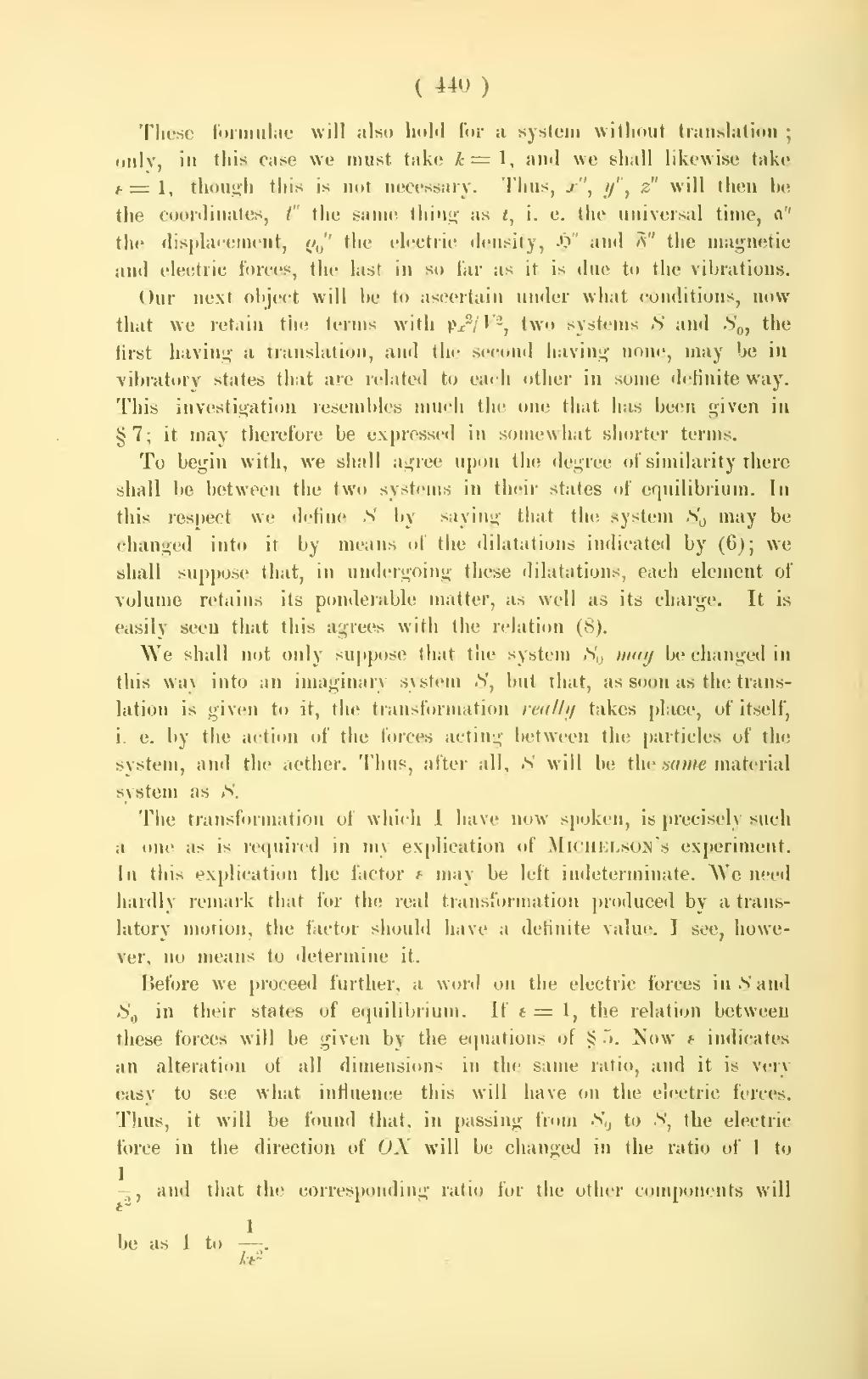( 440 )
These formulae will also hold for a system without translation; only, in this case we must take k=1, and we shall likewise take , though this is not necessary. Thus, x", y", z" will then be the coordinates, t" the same thing as t, i. e. the universal time, the displacement, the electric density, and the magnetic and electric forces, the last in so far as it is due to the vibrations.
Our next object will be to ascertain under what conditions, now that we retain the terms with , two systems S and S0, the first having a translation, and the second having none, may be in vibratory states that are related to each other in some definite way. This investigation resembles much the one that has been given in §7; it may therefore be expressed in somewhat shorter terms.
To begin with, we shall agree upon the degree of similarity there shall be between the two systems in their states of equilibrium. In this respect we define S by saying that the system S0 may be changed into it by means of the dilatations indicated by (6); we shall suppose that, in undergoing these dilatations, each element of volume retains its ponderable matter, as well as its charge. It is easily seen that this agrees with the relation (8).
We shall not only suppose that the system S0 may be changed in this way into an imaginary system S, but that, as soon as the translation is given to it, the transformation really takes place, of itself, i. e. by the action of the forces acting between the particles of the system, and the aether. Thus, after all, S will be the same material system as S.
The transformation of which I have now spoken, is precisely such a one as is required in my explication of Michelson's experiment. In this explication the factor may be left indeterminate. We need hardly remark that for the real transformation produced by a translatory motion, the factor should have a definite value. I see, however, no means to determine it.
Before we proceed further, a word on the electric forces in S and S0 in their states of equilibrium. If , the relation between these forces will be given by the equations of §5. Now indicates an alteration of all dimensions in the same ratio, and it is very easy to see what influence this will have on the electric forces. Thus, it will be found that, in passing from S0, to S, the electric force in the direction of OX will be changed in the ratio of 1 to , and that the corresponding ratio for the other components will be as 1 to .









